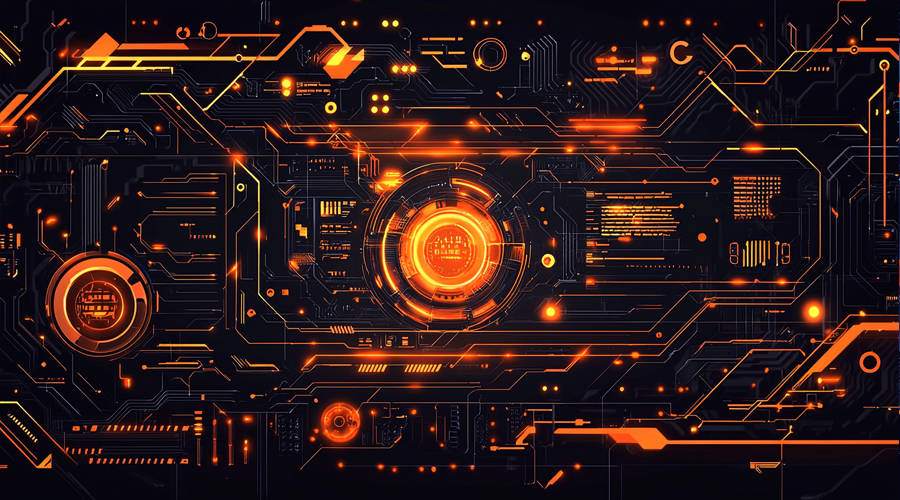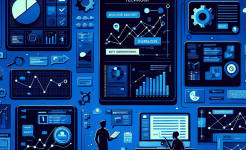In project management, effective time management is crucial for the success of any project. Two important tools that project managers rely on for time management are the Burndown chart and the Gantt chart. These charts provide visual representations of project progress, helping teams to track tasks, allocate resources, and meet deadlines. Understanding how to use these charts effectively can significantly improve project outcomes.
The Burndown chart focuses on the remaining work over time. It gives a clear picture of whether a project is on track to be completed within the allotted time. By plotting the amount of work remaining against the time, teams can quickly identify if they are falling behind or ahead of schedule. On the other hand, the Gantt chart is a more comprehensive tool that displays the start and end dates of all tasks in a project, as well as their dependencies. This allows project managers to see the overall project timeline and how different tasks interact with each other.
Both charts have their unique features and applications. In the following sections, we will explore these two charts in detail, understand their benefits, and learn how to use them in combination to enhance time management in project management.
The Burndown Chart
The Burndown chart is a simple yet powerful visual tool in project management. It typically has the time on the x - axis and the amount of work remaining on the y - axis. At the start of a project, the chart shows the total amount of work. As the project progresses, the line representing the remaining work should slope downwards, indicating that work is being completed.
One of the key advantages of the Burndown chart is its simplicity. It provides a straightforward view of the project's progress. Team members can easily understand whether they are on track or not. For example, if the line on the chart is steeper than expected, it means that more work is being completed than planned, which could be a sign of high productivity. Conversely, if the line is flatter, it indicates that the team is falling behind.
Moreover, the Burndown chart helps in early identification of potential problems. If the line starts to level off or even slope upwards, it signals that there are issues such as unforeseen obstacles, lack of resources, or inefficiencies in the work process. This early warning allows project managers to take corrective actions promptly, such as reallocating resources or adjusting the project plan.
The Gantt Chart
The Gantt chart is a widely used project management tool that offers a detailed view of the project schedule. It displays each task as a bar, with the length of the bar representing the duration of the task. The start and end dates of each task are clearly marked on the chart, along with any dependencies between tasks.
One of the main strengths of the Gantt chart is its ability to show the overall project timeline at a glance. Project managers can quickly identify the critical path of the project, which is the sequence of tasks that determines the shortest possible project duration. By focusing on the tasks on the critical path, managers can ensure that the project stays on schedule.
In addition, the Gantt chart is useful for resource allocation. Since it shows the start and end dates of all tasks, managers can see when different resources are needed. This helps in avoiding over - allocation or under - allocation of resources. For example, if two tasks that require the same resource are scheduled to occur at the same time, the manager can adjust the schedule to ensure that the resource is available when needed.
Furthermore, the Gantt chart can be used to communicate the project plan to stakeholders. Its visual nature makes it easy for non - technical stakeholders to understand the project schedule, the tasks involved, and the dependencies between them. This transparency helps in building trust and ensuring that everyone is on the same page regarding the project timeline.
Benefits of Using Both Charts Together

While the Burndown chart and the Gantt chart have their individual merits, using them in combination can provide even greater benefits for project time management. The Burndown chart focuses on the progress of work in terms of the amount of work remaining, while the Gantt chart focuses on the schedule and task dependencies.
By using both charts, project managers can get a more comprehensive view of the project. The Gantt chart provides the overall framework of the project schedule, while the Burndown chart shows how the actual work is progressing within that schedule. For example, the Gantt chart can tell us when a particular task should start and end, and the Burndown chart can show whether the work related to that task is being completed at the expected rate.
This combination also helps in better risk management. The Gantt chart can identify potential bottlenecks due to task dependencies, and the Burndown chart can show if the work is progressing in a way that might lead to missing deadlines. If a task on the critical path in the Gantt chart is not showing the expected progress on the Burndown chart, it is a clear sign that action needs to be taken to avoid project delays.
In terms of team communication, using both charts can enhance understanding among team members. The Gantt chart gives a high - level view of the project schedule, and the Burndown chart provides a more detailed look at the work progress. This dual - view helps team members to align their efforts, understand their roles in the overall project timeline, and communicate more effectively about any issues or challenges they face.
Implementing the Charts in Project Management
Implementing the Burndown chart and the Gantt chart in project management requires careful planning and execution. First, for the Burndown chart, the project team needs to accurately estimate the total amount of work at the start of the project. This includes breaking down tasks into smaller, manageable units and estimating the effort required for each unit.
Once the initial estimate is done, the team needs to regularly update the Burndown chart. This involves recording the amount of work completed at regular intervals, such as daily or weekly. By consistently updating the chart, the team can track the progress of the project and make adjustments as needed.
For the Gantt chart, the project manager needs to define all the tasks in the project, their start and end dates, and their dependencies. This requires a detailed understanding of the project scope and the sequence of activities. There are many project management software tools available that can help in creating and managing Gantt charts. These tools also allow for easy updates and sharing of the chart with the project team and stakeholders.
When using both charts together, it is important to ensure that the data used in both charts is consistent. The tasks and work estimates in the Burndown chart should align with the tasks and schedule in the Gantt chart. This alignment will ensure that the combined use of the two charts provides accurate and useful information for project time management.
Conclusion
In conclusion, the Burndown chart and the Gantt chart are invaluable tools in project management for effective time management. The Burndown chart offers a simple and intuitive way to track the remaining work over time, enabling teams to quickly assess progress and identify potential issues. The Gantt chart, on the other hand, provides a detailed overview of the project schedule, including task dependencies and resource allocation.
By using these two charts in combination, project managers can gain a more comprehensive understanding of the project. They can better manage risks, allocate resources, and communicate with the project team and stakeholders. Implementing these charts requires careful planning, accurate data collection, and regular updates.
In today's fast - paced business environment, where projects need to be completed on time and within budget, the effective use of the Burndown chart and the Gantt chart can make a significant difference. Project managers who master these tools are better equipped to lead successful projects, meet deadlines, and deliver high - quality results. As the complexity of projects continues to increase, the importance of these time management strategies will only grow. Therefore, it is essential for project management professionals to understand and utilize these charts to enhance their project management capabilities.
ARTICLE TITLE :Burndown chart and Gantt chart: Time management strategy in project management ,AUTHOR :ITpmlib

















